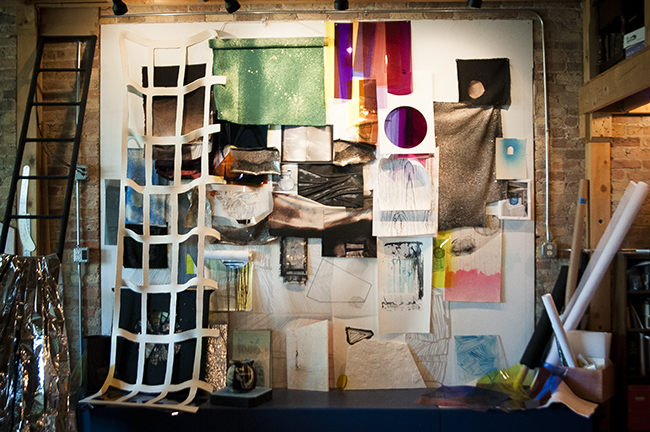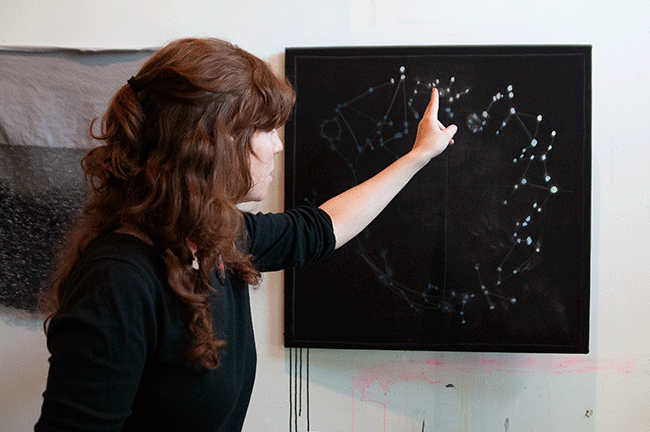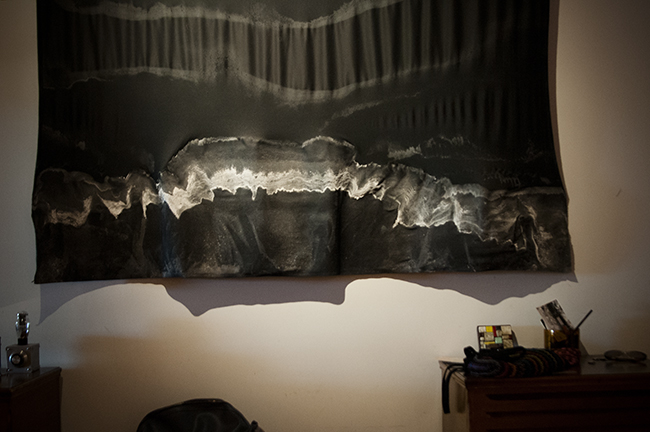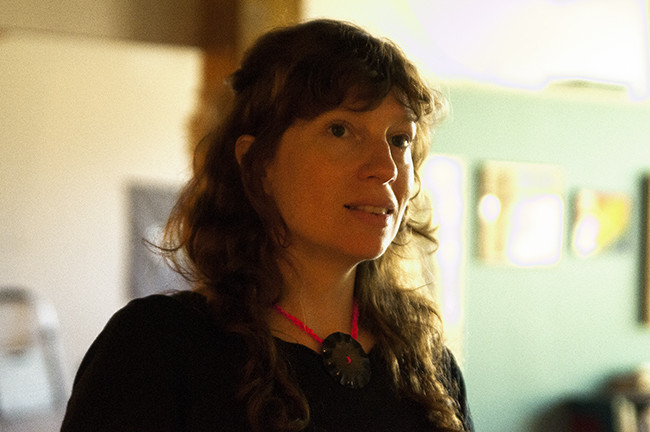Inside\Within is a constantly updating web archive devoted to physically exploring the creative spaces of Chicago's emerging and established artists.
Support for this project was provided by The Propeller Fund, a joint administrated grant from Threewalls and Gallery 400 at The University of Illinois at Chicago.

Search using the field below:
Or display posts from these tags:
3D printing 3D scanning 65 Grand 7/3 Split 8550 Ohio 96 ACRES A+D Gallery ACRE animation Art Institute of Chicago Arts Incubator Arts of Life audio blogging Brain Frame CAKE Carrie Secrist Gallery casting ceramics Chicago Artist Writers Chicago Artists Coalition Chicago Cultural Center Cleve Carney Art Gallery Clutch Gallery Cobalt Studio Coco River Fudge Street collage collection Columbia College Chicago Comfort Station comics conceptual art Contemporary Art Daily Corbett vs. Dempsey Creative Capital DCASE DePaul University design Devening Projects digital art Dock 6 Document drawing Duke University dye Elmhurst Art Museum EXPO Chicago Faber&Faber fashion fiber Field Museum film found objects GIF Graham Foundation graphic design Harold Washington College Hatch Hyde Park Art Center illustration Image File Press Imagists Important Projects ink installation International Museum of Surgical Science Iran Jane-Addams Hull House Museum jewelry Joan Flasch Artist's Book Collection Johalla Projects Julius Caesar Kavi Gupta Links Hall Lloyd Dobler LVL3 Mana Contemporary metalwork Millennium Park Minneapolis College of Art and Design Monique Meloche Museum of Contemporary Art Chicago (MCA) Museum of Contemporary Art Detroit (MOCAD) Museum of Contemporary Photography (MoCP) National Museum of Mexican Art (NMMA) National Resources Defense Council New Capital Northeastern Illinois University Northwestern University Ox-Bow painting paper mache Peanut Gallery peformance Peregrine Program performance photography PLHK poetry portraiture printmaking public art Public Collectors publications Renaissance Society risograph rituals Roman Susan Roots&Culture SAIC screen printing sculpture Sector 2337 Shane Campbell Silver Galleon Press Skowhegan Slow Smart Museum Soberscove Press social practice South of the Tracks Storefront SUB-MISSION Tan n' Loose Temporary Services Terrain Terrain Biennial text-based textile textiles The Banff Centre The Bindery Projects The Cultural Center The Franklin The Hills The Luminary The Packing Plant The Poetry Foundation The Poor Farm The School of the Art Institute of Chicago (SAIC) Threewalls Tracers Trinity College Trubble Club University of Chicago University of Illinois at Chicago (UIC) University of South Florida at Tampa Valerie Carberry Vermont Studio Center video weaving Western Exhibitions wood carving woodwork Yellow Book Yollocalli Arts Reach zinesInside\Within is produced in Chicago, IL.
Get in touch:
contactinsidewithin@gmail.com
Dana Carter's Nature-Bound Presence

Experimenting with an array of materials, Dana produces cut backdrops for her short videos and animations, light filtering through the slots that she gracefully removes from the dark fabric. Producing sets within her studio and on location, Dana creates videos that are both planned out and happened upon, a cinematic spontaneity incorporating nature and its poetic slowness. Dana’s practice is just as broad as the subjects she focuses, leaving open the ability for shifting light and attitude within her work.
I\W: How do you use your wall of remnant materials and objects to propel new ideas?
DC: It started as a thought process involving scraps, stencils, stains, tests on different fabrics, and pieces of drawings that were things I loved, but had no intended purpose for. I built them into this constellation of samples, or an inverted landscape. There is also a stage below the wall that was an element of a video piece in the past. Now it is literally a staging ground for projects. This wall is a place to watch materials change as light shifts at certain hours of the day. It is somewhere between a surface for animation and light elements, and a place for observation or reminder notes for future projects. It’s about presence, and I have to stand on stage to make a change, which is funny. A lot of the materials, especially the theatrical stuff like gels and fabrics, I have acquired over time from different side jobs. At times, I completely clear it out to make room for change.
What projects have you been focusing on in the very recent?
I have been doing cut work on a big scrim for an animated segment of a video. The video is footage I gathered while building a cairn sculpture. The animation is made from a fabric cut-out based on the landscape where the video was shot. It is in process right now. A big part of my practice is to imbue my pieces with changing light, or a changing attitude and meaning.

How important is the architecture of a space when you are setting up a show?
It’s not something I depend on, but if the space is dynamic and inspiring, I’ll use it as another material. I did a show called In the Morning We Sweep Out the Shadows, and I really admired the building — the location had a great combination of natural and ambient light that totally shifted and changed how you read the space. There was a piano there, and it became an anchor for the show. I had made a book that I wanted to use as a score, so I placed it on the piano. The piano made it possible for people to come in and interpret fabric drawings in a different texture—a texture of sound.
Your work deals with accepting the natural light in your pieces, but you are also taking that light and manipulating it with the gels or cut-outs.
I’m using different materials that tend to be ephemeral or low-fi and using them to highlight aspects of the architecture or space itself. It is about forcing presence, creating a narrative of vantage points depending on where the viewer is. Also I like the idea that these pieces aren’t static. Although I get engrossed with making singular objects, I like the idea that the works, given different environments, can change over time. So, there is a pulse to a line in a drawing, especially in the cut works.

What is the concept behind the large and small saltwater drawings you have been producing?
The line work is crystallizing and corroding all at once. A lot of my works are time pieces; these are the slowest works that I make. They eventually reach a point of stability when the crystals are fully formed. The process varies in length, and the bigger ones take less time because I dip them and my gesture is very active. There is an urgency to negotiating the scale of the fabric. For the smaller ones, I sometimes use stencils or fold creases that hold their shape, or are stiffened once the salt is solidified. They started with an accidental leak in the studio in the winter. I had a lot of this theatrical fabric that got stained because there was so much street salt around, and the mark that remained was beautiful. At the time I was reading a story by Mark Twain about a ship captain that gets lost at sea. He loses the capacity to understand his own velocity in space as he goes “traveling“ toward heaven. The story has a lot to do with being lost in terms of distance and horizon, not knowing where you are in the landscape. Visually, the stained fabric lined up with that story. The pieces have the look of satellite images. There is a vastness to them. The fabric is normally used to block out light in film and theater sets, I use it as a physical representation of darkness.

Where do you usually shoot your video works? In-studio, or on-site?
A little bit of both. In the studio it’s about process, and creating a set; in the field it’s about walking into a set that already exists.

I’m using different materials that tend to be ephemeral or low-fi and using them to highlight aspects of the architecture or space itself. It is about forcing presence, creating a narrative of vantage points depending on where the viewer is.
A lot of your work has to do with the slowness of nature. Do you feel like your work has been influenced by the human influence on nature via technology and global warming?
I think a lot about how fast memories turn into stories and those kind of perceptual inaccuracies, in part because of how we share information. I also can’t ignore that we are constantly being bombarded by artificial light. Ambient light plays a big role in my work. It doesn’t just have to be the sun. Obviously, there are periods when the pieces are at rest. In other moments, ambient light from a train signal, or something like that will come into play. The installations are generative. There are by-products that are printed, or singular material objects, that are not dictated or controlled by space.



